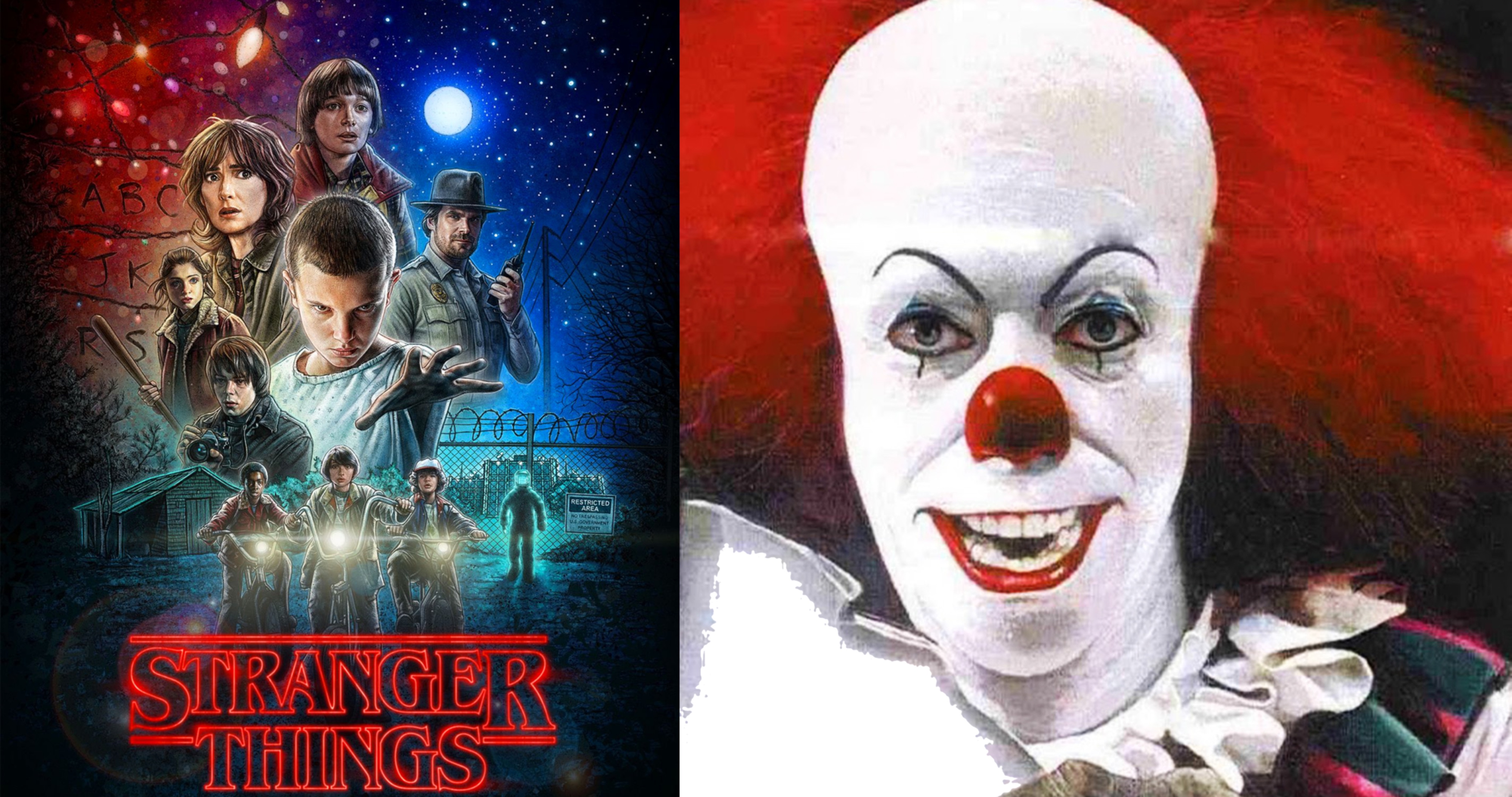IT And Stranger Things: A Look At Stephen King's Observations

Table of Contents
The Overlapping Themes of Childhood Trauma and Fear
Both IT and Stranger Things masterfully utilize the setting of childhood to explore the raw, visceral power of fear and trauma. The vulnerability of children, stripped of adult protection and forced to confront unimaginable horrors, forms the core of both narratives. This vulnerability is not merely physical; it's deeply psychological, leaving lasting scars that shape their adult lives.
- The vulnerability of children: The Losers Club in IT and the group of friends in Stranger Things are all depicted as facing threats far beyond their years, highlighting their innocence and naivety in the face of evil.
- The lasting impact of traumatic experiences: The trauma experienced by the characters in both narratives profoundly impacts their adult lives, often manifesting as psychological struggles or unresolved anxieties. The lingering effects of facing Pennywise or the Mind Flayer are powerful examples of this long-term consequence.
- Nostalgic settings contrasting with horror: The idyllic, small-town settings of Derry and Hawkins serve as a stark contrast to the horrific events unfolding, heightening the sense of unease and amplifying the impact of the trauma. The familiarity of these settings makes the intrusion of the supernatural all the more terrifying.
- Illustrative Examples: The near-death experiences of the Losers Club, particularly Georgie Denbrough's encounter with Pennywise, mirror the intense peril faced by Will Byers in Stranger Things. Both narratives effectively portray the profound psychological effects of these experiences.
The Power of the Supernatural and the "Other"
The supernatural elements in both IT and Stranger Things are central to their narratives. While vastly different in their specifics, both Pennywise and the Mind Flayer represent powerful, otherworldly forces that prey on the vulnerabilities of their victims.
- Pennywise vs. the Mind Flayer: Pennywise, a shapeshifting entity feeding on fear, shares a thematic parallel with the Mind Flayer, a terrifying interdimensional being that controls its victims. While Pennywise exploits individual fears, the Mind Flayer manipulates collective anxieties. Both embody the primal terror of the unknown.
- The "monster under the bed" archetype: Both narratives effectively utilize the classic "monster under the bed" archetype, representing the deep-seated fears and anxieties that plague childhood. However, both transcend the simplistic trope, imbuing their antagonists with complex motivations and unsettling power.
- Supernatural as a metaphor: The supernatural elements in both stories function as potent metaphors for the anxieties and fears inherent in growing up, facing the unknown, and confronting the darker aspects of humanity.
Small-Town Settings as a Character
Derry and Hawkins are not mere backdrops; they are integral characters in their respective stories. The small-town settings contribute significantly to the overall atmosphere and narrative structure.
- Isolation and claustrophobia: Both towns create a sense of isolation and claustrophobia, amplifying the feeling that escape is impossible. The close-knit communities, while offering a sense of belonging, also become breeding grounds for secrets and conspiracies, fueling the sense of unease.
- Towns as characters: The history, secrets, and hidden darkness within both Derry and Hawkins become intrinsic parts of the narrative, influencing the characters' actions and the overall plot progression.
- Heightening unease: The use of familiar, everyday settings—schools, homes, and streets—creates a jarring contrast with the extraordinary events unfolding, heightening the sense of unease and making the horror more relatable and disturbing.
Narrative Structure and Character Archetypes
The narrative structures and character archetypes employed in IT and Stranger Things share remarkable similarities. Both stories revolve around a group of friends facing extraordinary threats.
- Friendship and teamwork: The power of friendship and teamwork is central to overcoming the fear and danger in both narratives. The bonds between the characters become essential to their survival and their ability to confront the antagonists.
- Relatable characters: Both stories use relatable characters, making the audience more invested in their struggles and triumphs. This enhances the emotional impact and increases the overall effectiveness of the narrative.
- Adult and child protagonists: Both narratives feature both adult and child protagonists, offering different perspectives on the events and highlighting the enduring impact of childhood trauma.
- The "chosen one" archetype: Both narratives, although not explicitly, incorporate elements of the "chosen one" archetype, suggesting that certain individuals are destined to confront and overcome the supernatural threats.
King's Legacy and the Ongoing Influence on Horror
Stephen King's enduring legacy in the horror genre is undeniable, and his influence on Stranger Things is clear. His mastery of blending horror with relatable characters and settings is a cornerstone of his success and a key element that Stranger Things successfully emulates.
- Blending horror with relatability: King's ability to make the horrific relatable, grounding the supernatural in everyday settings and relatable characters, is a hallmark of his work and a key element of Stranger Things' success.
- Exploration of societal anxieties: Both King's work and Stranger Things explore societal anxieties and fears—the fear of the unknown, the fragility of childhood, and the darkness lurking beneath the surface of seemingly ordinary communities.
- Inspiring new generations: King's works continue to inspire new generations of filmmakers and writers, proving his enduring influence on the horror genre and popular culture.
Conclusion:
The parallels between IT and Stranger Things are striking, demonstrating the clear and significant influence of Stephen King's work on the Netflix hit. Both explore shared themes of childhood trauma, supernatural horror, and the power of small-town settings to amplify the sense of unease and dread. Explore the chilling connections between IT and Stranger Things and delve into the world of Stephen King's influence on this modern horror classic. You'll discover a deeper appreciation for both narratives and the enduring legacy of a master storyteller.

Featured Posts
-
 Dangote And Nnpc The Impact On Petrol Prices In Nigeria
May 10, 2025
Dangote And Nnpc The Impact On Petrol Prices In Nigeria
May 10, 2025 -
 Apple And Ai A Competitive Analysis
May 10, 2025
Apple And Ai A Competitive Analysis
May 10, 2025 -
 Sensex Soars 500 Nifty Above 17400 Adani Ports Gains Eternal Falls
May 10, 2025
Sensex Soars 500 Nifty Above 17400 Adani Ports Gains Eternal Falls
May 10, 2025 -
 Uk Set To Implement Stricter Immigration Rules English Language Test Crucial
May 10, 2025
Uk Set To Implement Stricter Immigration Rules English Language Test Crucial
May 10, 2025 -
 Vegas Golden Knights Even Series Against Minnesota Wild With Overtime Victory
May 10, 2025
Vegas Golden Knights Even Series Against Minnesota Wild With Overtime Victory
May 10, 2025
